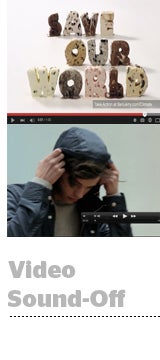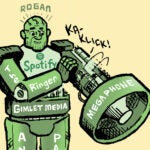 Autoplay is here to stay, especially in light of Facebook’s and Twitter’s latest video launches.
Autoplay is here to stay, especially in light of Facebook’s and Twitter’s latest video launches.
Two weeks after Twitter offered marketers a 100% in-view guarantee on autoplay video ads for three seconds, Facebook came out swinging with a cost-per-view model and a revenue-sharing agreement for ads sold against Suggested Videos.
With unique pricing models emerging for each platform, marketers find the metrics they’ve grown accustomed to with 30-second pre-rolls don’t necessarily conform to autoplay formats that live in a feed.
“We stopped looking at video views as a metric,” said Mike Hayes, global digital marketing manager for Ben & Jerry’s. “We’re now focused on retention and completed video views. We want to know how many people watched the full video and we’re optimizing toward that.”
Facebook and Twitter are both pushing to go beyond the CPM. However, each platform quantifies a “view” differently.
Facebook claims 4 billion video views per day, but when someone watches a video on Facebook twice, that’s two views. On YouTube, that would be only one. Meanwhile, Twitter videos won’t bill until three seconds in. Facebook videos will begin billing at 10 seconds for cost-per-view instances. The disparities are increasing.
“When we’re doing video buys leveraging our trading platform across multiple DSPs, it would be nice to consolidate some of the signals we’re optimizing video off of, whatever those metrics may be,” said Donnie Williams, chief digital officer at Horizon Media.
The agency uses all the major video buying platforms, as well as Opera Mediaworks for mobile video, Virool for longer-form, “non-conforming” video assets and True[x] for engagement-based ads.
“Whether it’s cost per view, GRP, CPM, cost per completed view … there needs to be some consolidation because the signals for whether you’re successful are a bit native to the environments [themselves] right now,” Williams added.
The Audibility Factor
The surge in autoplay also spotlights another question: How valuable is a view on a muted video?
Facebook is testing advanced ways to gauge viewer interaction includes whether the sound was turned on or the unit expanded.
Google expressed similar plans late last year. And a number of new formats like Virool’s mobile InLine unit, sold exclusively through Rubicon Project, play sound only when the user initiates.
Marketers have mixed feelings. While some believe autoplay can maximize the impact of an ad if it’s relevant or non-intrusive, others fear muted video requires a lot of additional customization.
But, “only a tiny percentage of people actually have audio on when they view a video,” pointed out Paul Berry, founder and CEO of social publishing platform RebelMouse. “Those first three seconds are everything and it’s so important that people doing it are using text overlay on the video. People are getting tremendously creative and see killer results when they do.”
At Videonuze’s recent Video Ad Summit, Al Cadena, a senior director of digital strategy at agency Beeby Clark + Meyer, said creating video for Facebook and YouTube requires a dual content strategy – one for autoplay (Facebook) and one for user-initiated formats (YouTube).
“The completion rates are higher on YouTube, but on Facebook you get more views,” he said. But the durations are shorter since consumers tend to “thumb stop,” or scroll and stop sporadically throughout the feed.
“We’ve seen the need to create more visual branding up front with the logo, image of a product or subtitles to capture the user within a few seconds,” Cadena added. Because marketers have to redesign video ads specifically for autoplay and can’t just repurpose TV or pre-roll creative, it requires more investment.
For many brands, that’s OK, since autoplay is factored into the creative process. Ben & Jerry’s doesn’t invest in TV ads, but instead focuses on digital where it prefers to cultivate relationships with customers around key social issues.
“We’re really starting to adapt our tactics to create custom video for the channels people are in,” said Hayes, adding the brand is doing things like shortening videos or adding subtitles to account for muted autoplay.
Hotels.com created a subtitled video ad poking fun at Facebook’s muted feed. And Ben & Jerry’s created several Facebook autoplay ads.
The creative in one 10-second ad featured an ice cube melting to reveal a pint of “Save Our Swirled” ice cream to promote awareness of the realities of climate change. In this instance, silent autoplay functioned as a part of the messaging to refocus the user’s visual attention on the slow-melting ice.
Hayes added: “We’re now creating different cuts for pre-roll and social video because when we buy pre-roll on a network like Hulu, there’s audio, which is very different than watching on Twitter or Facebook.” 
Autoplay As Part Of A Larger Strategy
Irfon Watkins, co-founder and CEO of video ad platform Coull, expects viewable guarantees on Twitter and Facebook to be a big win for brand marketers. He added, however, that Apple’s decision to allow ad blocking on Safari mobile web in iOS 9 means a quality user experience is still table stakes.
Although Twitter lets users toggle when and where to allow autoplay, other platforms like Instagram auto-loop video ads with fewer disablement options.
It’s also important to remember that autoplay, and other video formats, are part of a greater mix.
In March, Canadian menswear etailer Frank & Oak kicked off a spring video campaign with DSP SourceKnowledge, blending autoplay with skippable and 15- and 30-second pre-rolls across YouTube, Dailymotion and Facebook. CEO Ethan Song said mobile video and app install ads were a big priority.
The results: more than 50% of its traffic and member sign-ups coming from mobile. The campaign delivered 3.5 million impressions targeted toward men 18-40 in North America.
When running A/B tests in the initial phases of the campaign, videos that used a clear “visual call to action” at the start of the video, as well as visual messaging throughout, converted 58% better compared to a traditional linear TV-style ad (cinematic with voiceover), according to the company.
Users who signed up for a Frank & Oak membership after viewing campaign creative had 20% greater average order values when they purchased compared to standard site users.
Horizon’s Williams said it’s important for brands to find the right mix of formats and balance out costs with performance.
“Some of the models you’re seeing – this transition toward cost per engagement – are, of course, opportunistic, because if you were to try and back that out into a traditional model, it might not look as valuable,” he said, adding that “you have to land on it in a way that’s right for whatever you’re trying to accomplish.”













